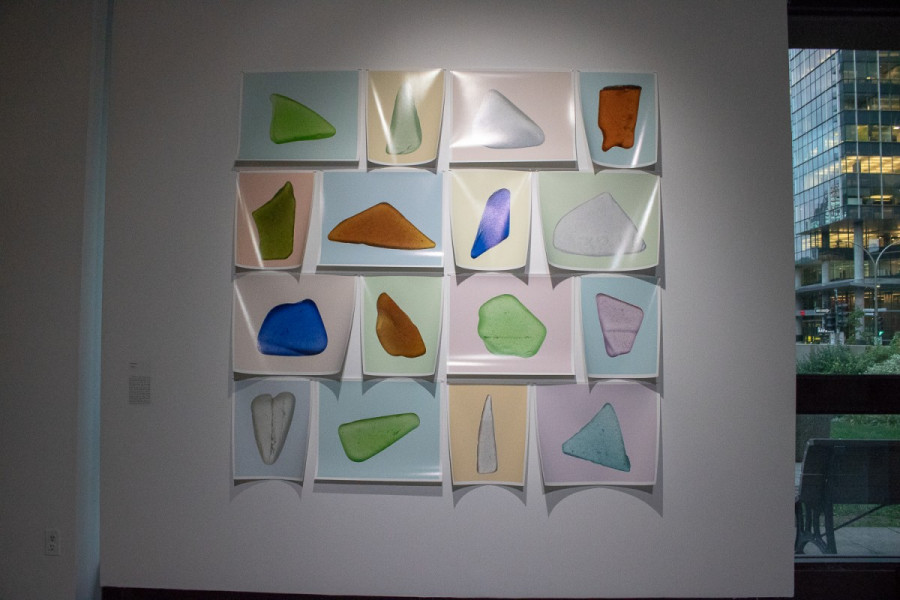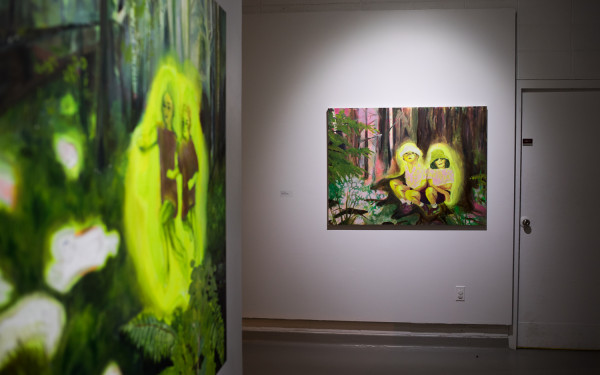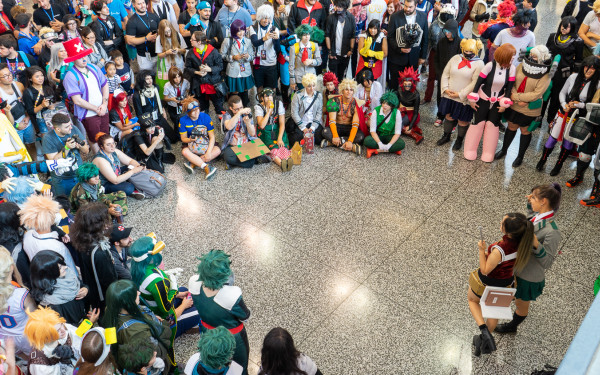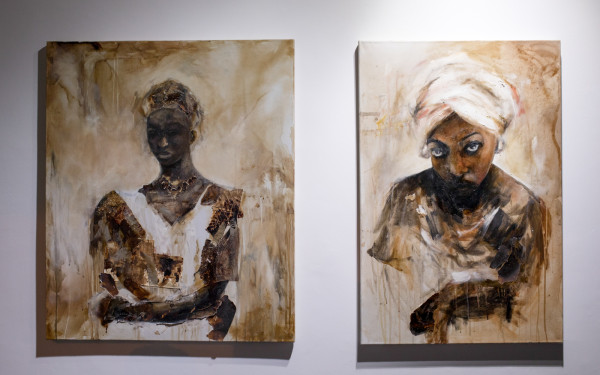The VAV Gallery’s “Relics.jpeg” Exhibition Focuses on Materials and Aesthetics
Ten Concordia Students Exhibit Personal and Political Work in their Most Recent Display
The first exhibition of the student-led Visual Arts Visuels Gallery’s fall cycle is a collection of intensely personal and politically charged pieces by Concordia students.
Less thematic than the previous exhibitions, Relics.jpeg was curated with an attention to materials and the physical properties of artworks. Each piece bears its own story, but the care and research poured into each creation links them all together.
Photography student Phil Mercier showcases his artwork called Sea Glass. The sound of the Atlantic ocean coming from a small cathode ray tube television attracts the visitors to the 16 photographs covering a portion of the gallery’s east wall.
“The work that I ended up making and that I showed is 16 images of sea glass that are quite a bit larger than they are at normal scale,” Mercier said. “I was interested in taking them out of context. A better way to say that would be: I was interested in isolating them from the ocean, just being able to view them as the o materials and the physical properties of artworks.objects [themselves].”
The element of time is imperative to the piece. It takes 20 to 50 years for the movement of the ocean, sand, and salt to transform a bottle that made its way to the ocean into sea glass, explained Mercier.
“Being from a coastal area, [sea glass] is a thing that I was around a lot,” said Mercier. “My mom was a bit of a beachcomber. She would go and collect them, and they would become almost like little sea gems. It’s that object of the sea glass that I wanted to explore with the project.”
“In reality, the objects themselves are small; the size of a dime or a penny,” he said. “In some way, blowing them up kinda gives them importance.”
Sea Glass is the product of careful and deliberate research. Mercier entrenched himself in the world of sea glass, attending a Prince Edward Island sea glass festival, frequenting niche Facebook groups where people sell and buy the product, and scanning eBay pages for unique pieces of it.
“I tried taking images of people collecting [sea glass] and [took] pictures at the festival,” Mercier explained, “but I kept coming back to just the object and being interested in the object of the sea glass.”
A last-minute addition, the accompanying CRT television projecting a video of the ocean elevates the photographs. While the sound of the waves draws the ear towards the piece, its effect runs deeper. Layered onto the screen of the television is a glass negative of the beach dating back from 1904, which Mercier bought from eBay.
“I like that idea that it […] references photography, and the history of photography in a way,” said Mercier. “It’s a piece of glass with the sea [projected] on it, so it becomes almost like a stand-in for sea glass.”
The resulting dialogue suggesting the passing of time between both elements of the piece makes Sea Glass one of the strongest pieces of the show.
Hung near the windows overlooking René-Lévesque Blvd. W., studio arts student Elisabeth Perrault’s oversized shirt made of sheer polyester is impossible to miss. Printed onto the material is the repeated image of an American child factory worker, creating a haunting pattern on the shirt. Printing the image was one of the biggest challenge in creating the piece, explained Perrault.
Perrault landed on the idea of creating such a big shirt to represent the massive size of the clothing industry. Her piece ties together the past and the present of the clothing industry, she said.
“How I can build something with more than one print to represent this idea?” said Perrault about her creative process and pondering about the clothing industry. “I was questioning myself. What could represent [this industry the most]? I was thinking of something very simple, like a shirt.”
“The execution of the work is amazing because it’s so big,” said Jose Garcia, the VAV’s financial and administrative coordinator. “She stitched everything like a real shirt; all the end stitches and buttons, everything. It talks about industrialism and it’s a specific story about a [girl], and [her] life as a factory worker. [Perrault] was trying to tell the story through [her] labour on the shirt.”
Relics.jpeg also showcases studio arts student Will Alba’s first sculpture. I’m a Real Boy was an experiment, explained Alba. It is made from insulation foam, a malleable material which Alba sculpted with a hot wire.
The piece is driven by the element of surprise. Inspired by his previous work with “letter structure and abstract graffiti,” the artwork appears to be made from two different materials; the bottom piece is painted in a golden colour, and the top is lined with faux-wood.
“The way I presented it was so that people would see it from the front, and as they walked around the back is kind of a surprise,” Alba said. “It’s kind of obvious the wood is fake; you could see the light how reflects off it, and you can see some wrinkles on the plastic. This whole idea of deceiving the audience is kind of meant to make them question what they’re looking at.”
Alba explained that the title of his piece comes from the story of Pinocchio. He chose I’m a Real Boy because it hints at the theme of deception and suggests the questioning of reality.
“It’s not a classic painting or something you see in a really fancy gallery made of marble,” said Alba. “Again, with the idea of deception, is to question whether this piece belongs in a gallery or not. That’s why I picked the title.”
Relics.jpeg runs between Oct. 1 and Oct. 19. Visit their website for information about their future shows.



_600_832_s.png)




